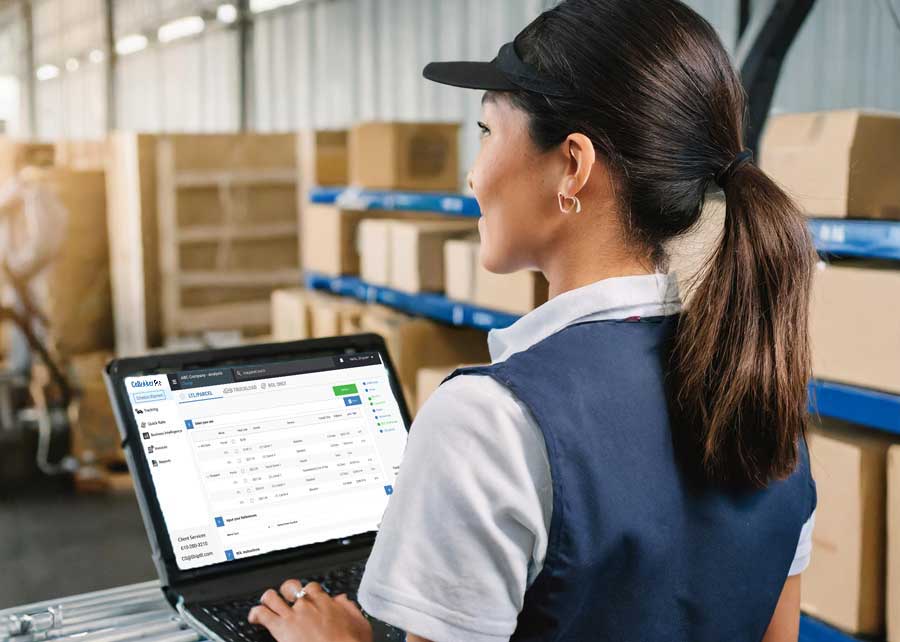A Transportation Management System (TMS) is a powerful shipping technology tool that streamlines freight management and logistics operations. It helps shippers plan, execute, and track shipments across multiple carriers and modes. By automating key logistics tasks, a TMS reduces manual effort and cuts freight costs. It also improves visibility, enabling teams to make better decisions, optimize carrier selection and meet customer expectations.
Last week, we were asked “can we upload our routing guide”, and while this can be done it is extremely obsolete. TMS systems, like ViewPoint, are integrated directly with carriers offering dynamic pricing, and tariffs that are individuated to accessorials, hundredweight, freight classification, lane pairing among many other factors. It is critical, if you are sincere about scaling your operations supply chain, to embrace the utilization of a TMS system.
Unlike old-school spreadsheets and phone calls, a modern TMS provides a centralized platform for managing shipments from start to finish. Whether you ship parcel, less-than-truckload (LTL), or full truckload freight, the system helps you work faster and smarter. It’s a must-have for businesses looking to scale their supply chain efficiently. A TMS is essential for almost every shipper. Nearly all large shippers—98%—use one, and 83% of small businesses do as well.
Beyond cost savings, a TMS brings transparency and control. It organizes carrier contracts, compares rates in real time, and automates shipment tendering. It gives your team access to crucial data and analytics, helping identify inefficiencies and optimize routes.
Real-Time Tracking
Real-time shipment visibility is vital in your supply chain for all direction types. Historically much of the focus of shippers has only been on outbound traffic control, while procurement and purchasing has relied under the assumption that vendors can auto mode-optimize or use some static rating engine. Translogistics integrates directly with TIVE and Descartes MacroPoint to provide live GPS tracking, giving you up-to-the-minute updates on all shipments. But it doesn’t stop at location data—this integration also monitors light exposure, temperature, and other critical transit conditions.
Thanks to robust API and EDI connections, carriers automatically push updates into the system. This reduces manual tracking work and keeps your information accurate and reliable.
Why does this matter? It’s more than just a tool for your traffic or logistics teams. Purchasing and procurement departments gain clear insight into inbound inventory and raw materials. This visibility helps keep production on schedule by knowing exactly what’s in transit and when it will arrive.
Your customers expect timely delivery updates, and ViewPoint TMS helps you deliver on those promises. The platform pulls tracking information from multiple carriers and consolidates it into one easy-to-use dashboard. This reduces confusion, improves communication, and speeds up problem-solving.
Real-time tracking also boosts carrier performance management. You can monitor reliability, on-time delivery rates, and exceptions in one place. When shipments face delays, the system alerts your team immediately, so they can respond fast and minimize disruptions.
TMS Cuts Costs and Boosts Efficiency
Cost control is a top reason companies adopt a TMS. The software compares carrier rates across multiple modes instantly. It finds the most economical shipping options while meeting your delivery timelines. Automated load tendering and smart routing prevent overpaying or inefficient carrier assignments.
Beyond immediate savings, a TMS collects historical shipment data. This data helps identify expensive lanes, frequent delays, and contract opportunities. With these insights, you can negotiate better deals and optimize your freight strategy. This data is critical when fielding RFPs, and when doing rate simulations by taking proposals and rating them against historical data to see the actual price impact of adding or removing a carrier.
The TMS system also automates BOL and POD paperwork and freight bill audits, reducing costly mistakes. By minimizing manual processes, your team spends less time on administration and more on strategic tasks.

Empowering Your Team with Transportation Management Software
A TMS isn’t just software—it’s a productivity tool for your entire logistics operation. It automates repetitive tasks like quoting, dispatching, and document management. This frees your team to focus on exceptions and continuous improvement. For example, ViewPoint now has AI integrated directly into the system that enables drag and drop BOL creation.
Cloud-based platforms like ViewPoint TMS are designed for ease of use. They require minimal training and allow users to customize workflows and reports. Customer service teams benefit from instant access to shipment statuses, enabling faster, more accurate responses to inquiries. This means that deployment for your location can take as little as one to four weeks.
When your shipping processes run smoothly, your whole company benefits—from operations to sales to finance. The right TMS scales with your business and adapts to evolving logistics challenges.
FAQ: Transportation Management System (TMS)
What is a Transportation Management System?
A TMS is software that helps businesses vet motor carriers, and plan, execute, and monitor shipments, managing freight from origin to delivery efficiently.
How does a TMS improve shipment visibility?
By integrating ViewPoint TMS with GPS providers like TIVE and Descartes MacroPoint, live tracking is now possible which monitors transit conditions such as temperature and light exposure.
Can a TMS help reduce shipping costs?
Yes. A TMS compares motor carrier rates in real time, automates load tendering, and provides data insights to optimize routes and negotiate better contracts. The freight invoice audit alone ensures that there will be savings through deploying the TMS system.
Who benefits from real-time tracking in a TMS?
Traffic, purchasing, procurement, and customer service teams all gain better visibility to manage inbound inventory and improve customer communications.
Is integrating a TMS with existing systems difficult?
Our TMS platform supports API and EDI integrations, enabling carriers to push updates automatically and connect with ERP systems easily.
